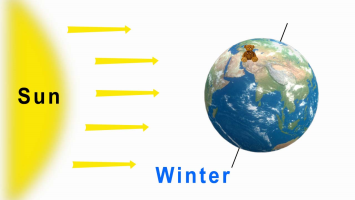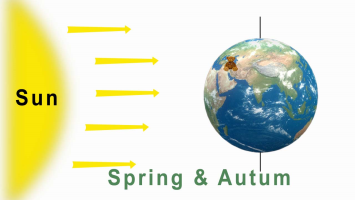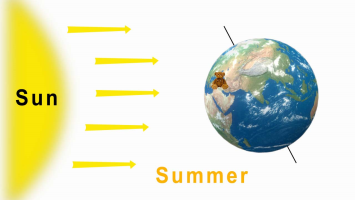The Vernal Equinox
Chapter One - Explaining The Vernal Equinox
A Read-Along Activity
The teddy bears have been planning their celebrations for the Vernal Equinox ever since they first heard the term a few weeks ago.
Firstly, they found out all about what the Vernal Equinox is. You may already know that the way the Sun, the Earth and the Moon move around in relation to each other is what gives us our day and night, as well as our four seasons: Spring, Summer, Autumn and Winter.

One thing that the bears discovered is that the Earth is tilted. As it moves around the Sun, it doesn't sit straight upright with the North Pole exactly at the top and the South Pole exactly at the bottom. Instead, it leans a little to one side.
The tilt is important because it means that at certain times of the year, more of one part of the Earth is facing the Sun than at other times. This tilt gives us our seasons.
In December, the northern part of the Earth (where the teddy bears live) is tilted away from the Sun, and this means that we get the least hours of sunshine - giving us long nights and the shortest day of the year. It's when we have our Winter.

By March though, the Earth has moved further around the Sun, and now the tilt means that the Sun is facing right at the middle of the Earth. The rays of the sun are shining on the northern and southern parts of the Earth equally. This means we get about the same number of hours of daytime and night-time.
We call this time of year Spring, and the day of the year when we have the most equal day and night is called the Vernal Equinox. Equinox comes from the Latin words for 'equal' (aequus) and 'night' (nox) because the day and night were thought to be equal in all parts of the world on this day.

(Don't forget to go on and read Chapter Two)